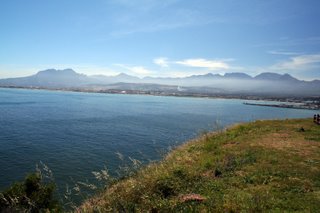
My field sites were east of Cape Town across False Bay. On the map this looks like a short drive, but it takes about 1.5 hours to get there. This is a view from the east side of False Bay looking toward the west. You can see Mitchell's Plain and the Cape Peninsula mountains from here

When I first visited this area in 1996, the road was gravel and there were no guard rails along the turns. Now the road is paved and wonderful to drive. It's windy and twisty and still without guard rails along most of its length, but the curves do have rock walls that make it seem safer. It's a beautiful, scenic drive and one of my favorites in South Africa.
 This is a view toward Hangklip, the point at the end of False Bay. There's a lighthouse there, but you can't go visit it. The entire area has been closed to traffic, probably because of all the aquaculture that is going on there. This is very unfortunate from my point-of-view, because two populations of my new species is in that area and I couldn't access them to check on their status. I'll have to try again in a future field season after securing permission to access the land.
This is a view toward Hangklip, the point at the end of False Bay. There's a lighthouse there, but you can't go visit it. The entire area has been closed to traffic, probably because of all the aquaculture that is going on there. This is very unfortunate from my point-of-view, because two populations of my new species is in that area and I couldn't access them to check on their status. I'll have to try again in a future field season after securing permission to access the land.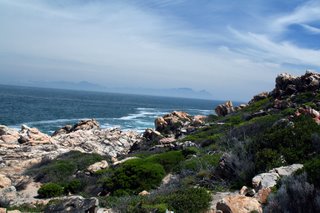
The coastline is rocky and rugged. There are a lot of interesting birds, sea lions, and Southern Right Whales to be seen along this coast. We didn't spot any whales this trip, but there will be at least one more opportunity before I head back to the states.
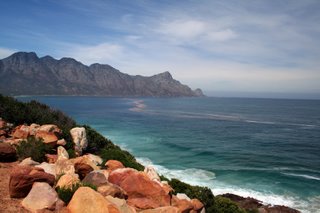
Here's one more scenic view of False Bay looking towards Hangklip. The streaks of pink in the ocean are spawn from some cnidarian or another. Full moon was just a couple of days ago, and that's when a lot of sea organisms spawn.

Here's the field site from today, a beach and dune system at Pringle Bay. This area has really been built up since I last visited in 2002. The houses are built right up to the dune, and the vegetation is getting thicker and taller. Not good habitat for Hyobanche.
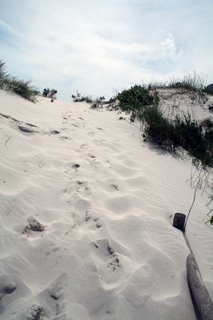
Here's what I mean. This dune is about 2.5 meters taller than when I last visited. You can gauge it by where the fence post is buried. Those small shrubs used to be much taller. Now, they are buried up to the tips.
After slogging up and down the dunes at Pringle Bay for a couple of hours, we went to investigate Hangklip and found the sites were not accessible. Bummer! That's very frustrating to me. The Pringle Bay site and the two Hangklip sites were the only ones to check in this area and we were only at 1:30 pm, so we decided to go have our lunch at Stony Point and to see the penguin reserve. The next thirty or so pictures are of penguins, sea birds, tide pools and the like from Stony Point. The last few pics are from the last fieldsite of the day - just to prospect for Hyobanche.
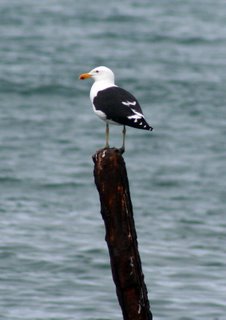
When you walk to the point from the car park, there is a rocky shoreline and a boat ramp. The first bird I saw there was this Southern blackbacked gull.
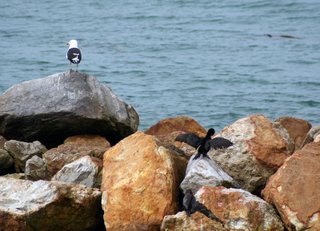
Same gull with two Cape Cormorants.
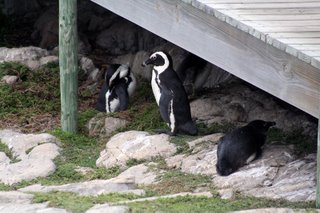
To access the penguin reserve, you walk along a board walk. These Jackass Penguins (aka African Penguins) found a nice spot under the boardwalk.
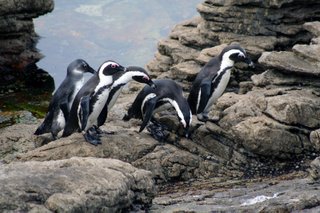
This group was coming out of the water and up the slope. It was fun to watch them decide how to take the small hops.
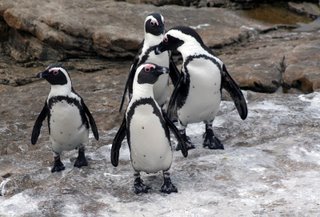
Everybody ok? Fall in!
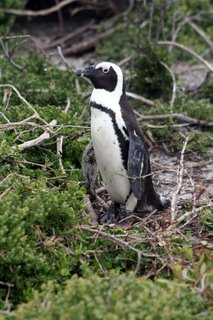
Here's one up in the fynbos.

The colony seems much larger than I remembered from previous years. The last time I was here was in 2002.
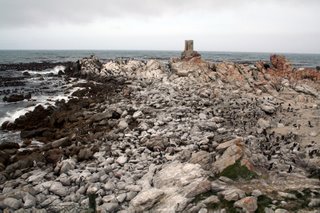
Here's a wide-angle view of the point.

Lounging on the rocks.

Bank Cormorants.
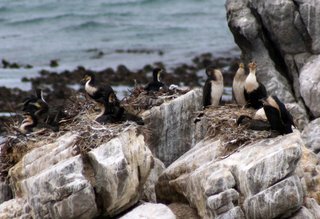
White breasted cormorants.
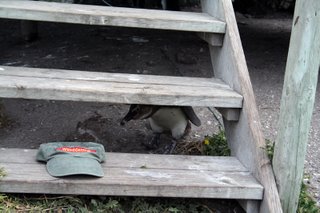
The viewpoint area overlooking Stony Point is accessed by a small stairway. This penguin was hiding under the stairs. It looks very interested in my Woodcentral hat.

On the western slope of the reserve there is a huge number of nesting sites. I was surprised to see that most of the nests had two chicks. The nests are dug into the hillside, usually under a shrub or rock.
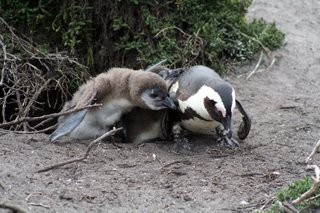
The chicks are very agressive in begging for food.
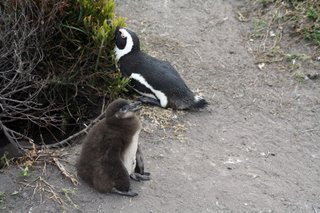
This one must have eaten its fill. It looks very satisfied here.
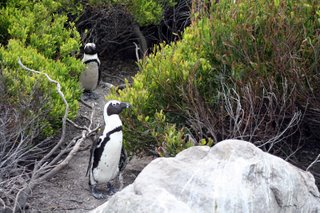
A short commute through the bush. It's so interesting to see these penguins in the fynbos. It goes against the stereotype of Antarctic habitats for penguins.
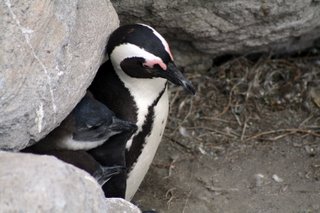
This looks cozy, but this was before the begging frenzy. The two chicks ganged up on the parent to be fed.
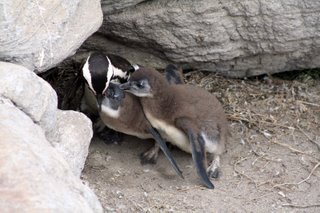
The chick on the right is trying to get in on the feeding of the chick on the left.
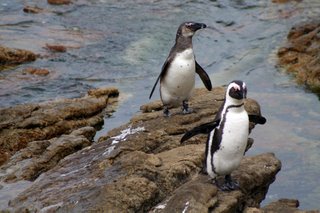
Last penguin pics for this trip. This is an adult and a juvenile. You have to admit, they're very cute. However, I have it on good authority that these birds are not cute and cuddly, they'd just as soon bite off your finger than be petted.
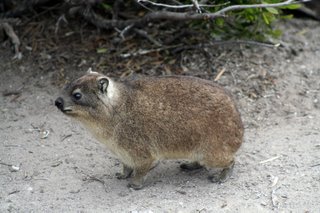
There was a Rock Hyrax (Dassie) wandering around the penguin colony. This animal is the closest living relative to an elephant.
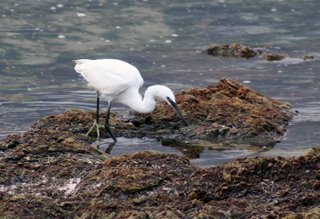
A Little Egret foraging in the tide pools. Note the yellow foot and black legs and beak. Those are the key characters for identification.
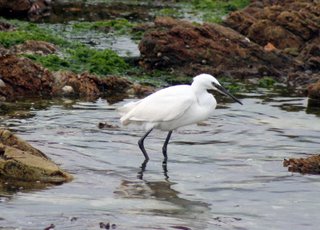
It was interesting to watch this bird forage. It wasn't very sure-footed in the tidepool. I wonder if all that stumbling around was for stirring up prey, or if it's just a clumsy bird. It seemed to be pretty successful at nabbing food.
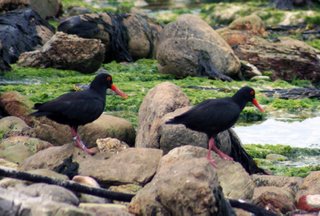
A pair of African Oystercatchers. What a treat to see these.

Now, that's color coordination. Very elegant, I think.
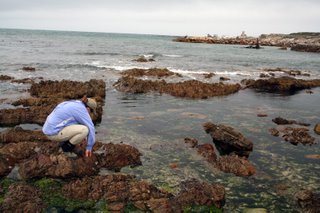
Esprit plans to do her graduate studies in marine biology, so she was very interested in what was inhabiting the tide pools.

Lots of limpets are here, that's for sure.
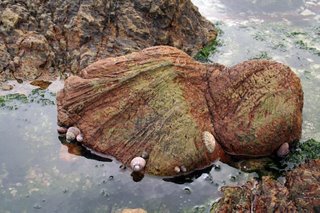
Some type of gastropod. I'm clueless as to the identity.
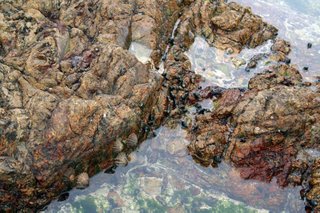
More critters.

A detail shot of the above scene.
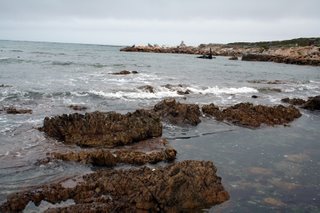
A view of the tide pools looking toward Stony Point.
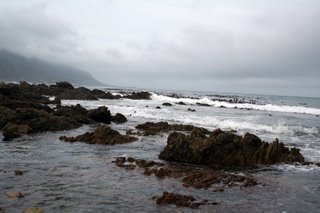
The rocky coast is stunning, if not particularly friendly for walking a beach. This coastline is heavily populated with aquaculture farms - abalone, especially.
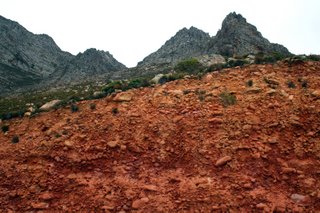
On the way back, I found a pull-off where I could snap a picture of one of the road cuts. It seems like an ancient river system was uplifted and the sediment is full of river gravel with rocks up to a half meter in length.
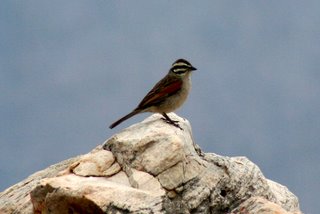
At the last stop where we looked for Hyobanche, we didn't score a collection, but I spotted this beautiful Cape Bunting.
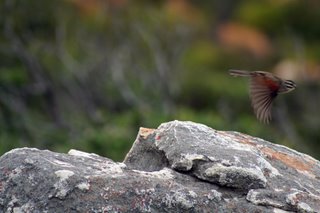
It had places to go, food to catch, so it didn't stick around for long.
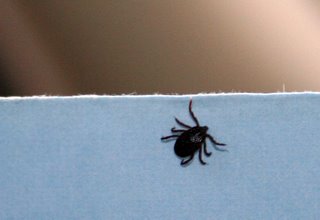
Ahhhhh, yes, it wouldn't be a field season in South Africa without the wonderful ticks. Nasty buggars!




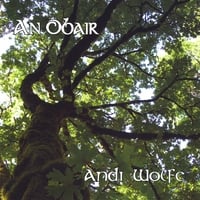






No comments:
Post a Comment